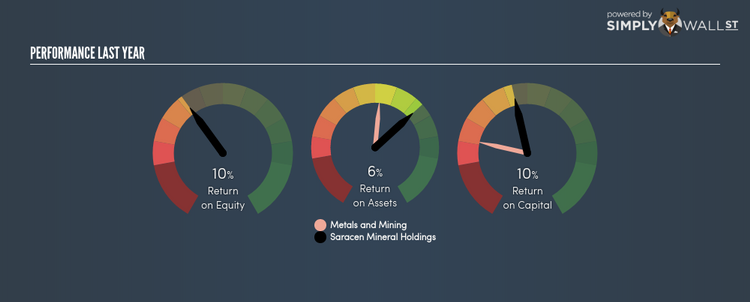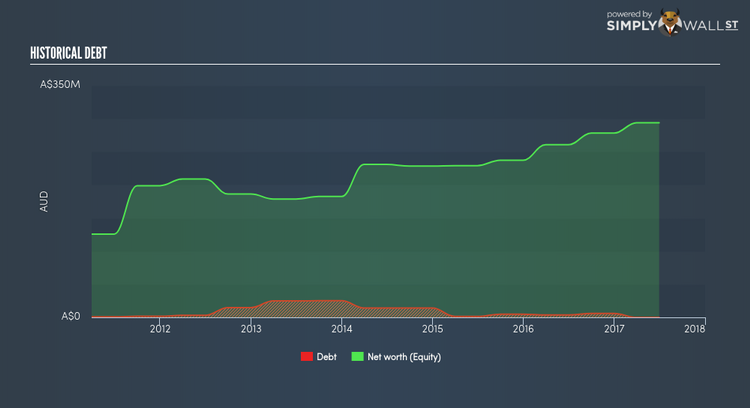What You Must Know About Saracen Mineral Holdings Limited’s (ASX:SAR) Return on Equity

Saracen Mineral Holdings Limited (ASX:SAR) generated a below-average return on equity of 10.23% in the past 12 months, while its industry returned 10.35%. An investor may attribute an inferior ROE to a relatively inefficient performance, and whilst this can often be the case, knowing the nuts and bolts of the ROE calculation may change that perspective and give you a deeper insight into SAR’s past performance. Today I will look at how components such as financial leverage can influence ROE which may impact the sustainability of SAR’s returns. Check out our latest analysis for Saracen Mineral Holdings
Breaking down ROE — the mother of all ratios
Firstly, Return on Equity, or ROE, is simply the percentage of last years’ earning against the book value of shareholders’ equity. It essentially shows how much the company can generate in earnings given the amount of equity it has raised. Generally speaking, a higher ROE is preferred; however, there are other factors we must also consider before making any conclusions.
Return on Equity = Net Profit ÷ Shareholders Equity
ROE is measured against cost of equity in order to determine the efficiency of Saracen Mineral Holdings’s equity capital deployed. Its cost of equity is 9.71%. While Saracen Mineral Holdings’s peers may have higher ROE, it may also incur higher cost of equity. An undesirable and unsustainable practice would be if returns exceeded cost. However, this is not the case for Saracen Mineral Holdings which is encouraging. ROE can be broken down into three different ratios: net profit margin, asset turnover, and financial leverage. This is called the Dupont Formula:
Dupont Formula
ROE = profit margin × asset turnover × financial leverage
ROE = (annual net profit ÷ sales) × (sales ÷ assets) × (assets ÷ shareholders’ equity)
ROE = annual net profit ÷ shareholders’ equity

The first component is profit margin, which measures how much of sales is retained after the company pays for all its expenses. The other component, asset turnover, illustrates how much revenue Saracen Mineral Holdings can make from its asset base. The most interesting ratio, and reflective of sustainability of its ROE, is financial leverage. Since ROE can be inflated by excessive debt, we need to examine Saracen Mineral Holdings’s debt-to-equity level. Currently, Saracen Mineral Holdings has no debt which means its returns are driven purely by equity capital. This could explain why Saracen Mineral Holdings’s’ ROE is lower than its industry peers, most of which may have some degree of debt in its business.

What this means for you:
Are you a shareholder? Even though SAR returned below the industry average, its ROE comes in excess of its cost of equity. Since its high ROE is not likely driven by high debt, it might be a good time to top up on your current holdings if your fundamental research reaffirms this analysis. If you’re looking for new ideas for high-returning stocks, you should take a look at our free platform to see the list of stocks with Return on Equity over 20%.
Are you a potential investor? If you are considering investing in SAR, looking at ROE on its own is not enough to make a well-informed decision. I recommend you do additional fundamental analysis by looking through our most recent infographic report on Saracen Mineral Holdings to help you make a more informed investment decision.
To help readers see pass the short term volatility of the financial market, we aim to bring you a long-term focused research analysis purely driven by fundamental data. Note that our analysis does not factor in the latest price sensitive company announcements.
The author is an independent contributor and at the time of publication had no position in the stocks mentioned.
